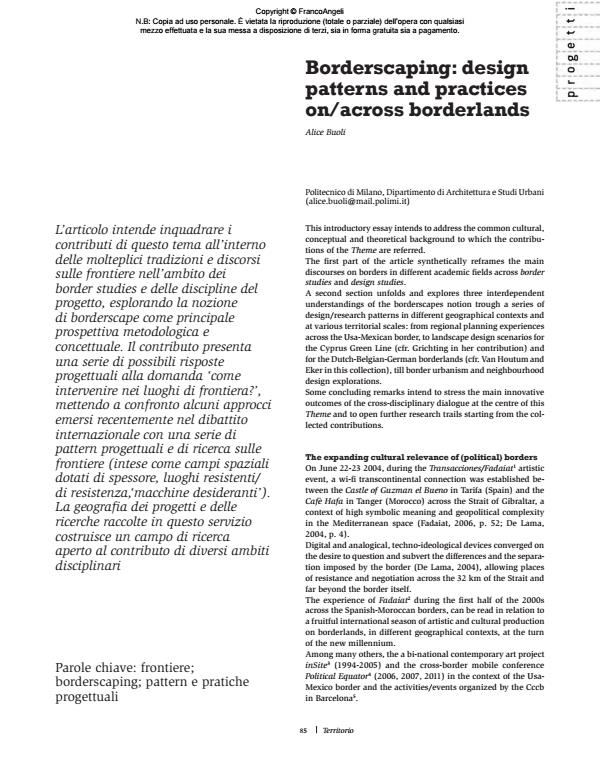Borderscaping: design patterns and practices on/across borderlands
Journal title TERRITORIO
Author/s Alice Buoli
Publishing Year 2015 Issue 2015/72
Language English Pages 10 P. 85-94 File size 382 KB
DOI 10.3280/TR2015-072014
DOI is like a bar code for intellectual property: to have more infomation
click here
Below, you can see the article first page
If you want to buy this article in PDF format, you can do it, following the instructions to buy download credits

FrancoAngeli is member of Publishers International Linking Association, Inc (PILA), a not-for-profit association which run the CrossRef service enabling links to and from online scholarly content.
L’articolo intende inquadrare i contributi di questo tema all’interno delle molteplici tradizioni e discorsi sulle frontiere nell’ambito dei border studies e delle discipline del progetto, esplorando la nozione di borderscape come principale prospettiva metodologica e concettuale. Il contributo presenta una serie di possibili risposte progettuali alla domanda ‘come intervenire nei luoghi di frontiera?’, mettendo a confronto alcuni approcci emersi recentemente nel dibattito internazionale con una serie di pattern progettuali e di ricerca sulle frontiere (intese come campi spaziali dotati di spessore, luoghi resistenti/ di resistenza,‘macchine desideranti’). La geografia dei progetti e delle ricerche raccolte in questo servizio costruisce un campo di ricerca aperto al contributo di diversi ambiti disciplinari
Keywords: Frontiere; borderscaping; pattern e pratiche progettuali
Alice Buoli, Borderscaping: design patterns and practices on/across borderlands in "TERRITORIO" 72/2015, pp 85-94, DOI: 10.3280/TR2015-072014